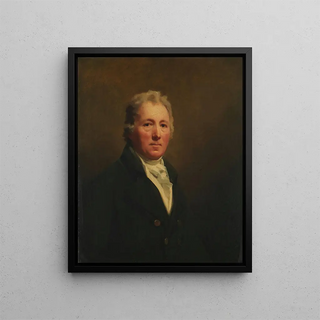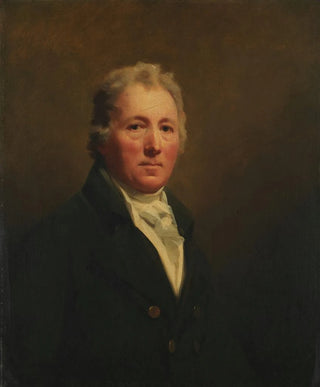Art print | William Forsyth 1749-1814 - Sir Henry Raeburn


View from behind

Frame (optional)
William Forsyth 1749-1814 - Sir Henry Raeburn – Engaging Introduction
In the fascinating world of art, some works transcend mere frames to become witnesses of their era. The art print William Forsyth 1749-1814 - Sir Henry Raeburn perfectly illustrates this concept. This painting, imbued with psychological depth and remarkable technical mastery, invites us to delve into the universe of 18th-century Scottish portraiture. Through delicate features and subtle lighting illuminating the subject's face, Forsyth's work tells a story—of a man and a moment frozen in time—while also offering a reflection on identity and society of his period.
Style and uniqueness of the work
William Forsyth's style is characterized by elegance and sophistication that set him apart from his contemporaries. In his depiction of Sir Henry Raeburn, the artist manages to capture not only the physical appearance of the character but also his essence. The chosen color palette, oscillating between warm tones and delicate shadows, creates an intimate and engaging atmosphere. The way light plays on the textures of clothing and the model's skin demonstrates impressive technical mastery. Forsyth also employs compositional elements that direct the viewer's gaze toward the face of the protagonist, thus enhancing the emotional impact of the art print. This portrait does not merely depict a man; it evokes a personality, a presence that seems almost alive.
The artist and his influence
William Forsyth, a major figure in Scottish portraiture, established himself through his distinctive style and his ability to capture the soul of his subjects. Trained in a rich artistic environment, he was influenced by European masters while developing a personal approach that is uniquely his own. His work goes beyond simple representation; he seeks to establish a dialogue between the viewer and the subject, an interaction that transcends time. Forsyth also contributed to the evolution of portraiture in Scotland, paving the way for a new generation of artists eager to explore human psychology through their art. His influence endures, and his works continue to inspire those interested in complexity

Matte finish

View from behind

Frame (optional)
William Forsyth 1749-1814 - Sir Henry Raeburn – Engaging Introduction
In the fascinating world of art, some works transcend mere frames to become witnesses of their era. The art print William Forsyth 1749-1814 - Sir Henry Raeburn perfectly illustrates this concept. This painting, imbued with psychological depth and remarkable technical mastery, invites us to delve into the universe of 18th-century Scottish portraiture. Through delicate features and subtle lighting illuminating the subject's face, Forsyth's work tells a story—of a man and a moment frozen in time—while also offering a reflection on identity and society of his period.
Style and uniqueness of the work
William Forsyth's style is characterized by elegance and sophistication that set him apart from his contemporaries. In his depiction of Sir Henry Raeburn, the artist manages to capture not only the physical appearance of the character but also his essence. The chosen color palette, oscillating between warm tones and delicate shadows, creates an intimate and engaging atmosphere. The way light plays on the textures of clothing and the model's skin demonstrates impressive technical mastery. Forsyth also employs compositional elements that direct the viewer's gaze toward the face of the protagonist, thus enhancing the emotional impact of the art print. This portrait does not merely depict a man; it evokes a personality, a presence that seems almost alive.
The artist and his influence
William Forsyth, a major figure in Scottish portraiture, established himself through his distinctive style and his ability to capture the soul of his subjects. Trained in a rich artistic environment, he was influenced by European masters while developing a personal approach that is uniquely his own. His work goes beyond simple representation; he seeks to establish a dialogue between the viewer and the subject, an interaction that transcends time. Forsyth also contributed to the evolution of portraiture in Scotland, paving the way for a new generation of artists eager to explore human psychology through their art. His influence endures, and his works continue to inspire those interested in complexity






